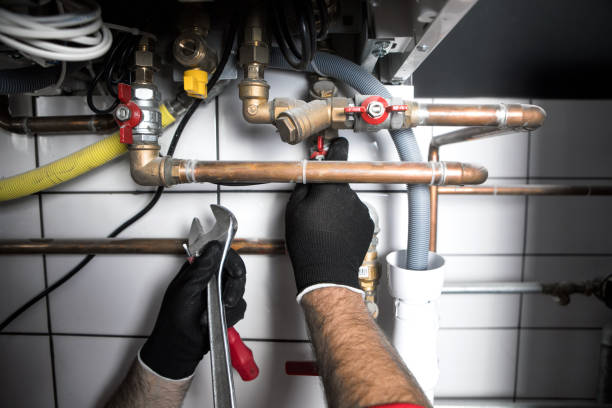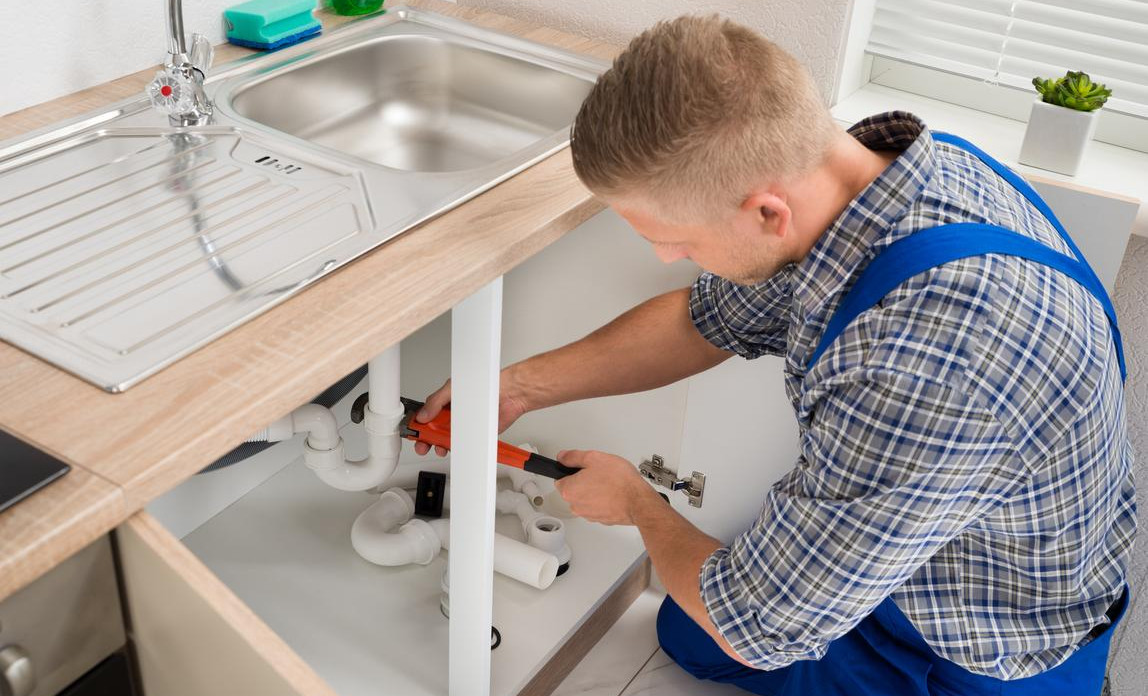We have found this great article pertaining to Exploring Your Homes Plumbing Anatomy listed below on the net and concluded it made good sense to share it with you here.

Understanding just how your home's pipes system works is essential for every home owner. From providing clean water for drinking, food preparation, and bathing to safely getting rid of wastewater, a properly maintained plumbing system is essential for your family's wellness and convenience. In this extensive overview, we'll check out the elaborate network that composes your home's pipes and offer ideas on maintenance, upgrades, and taking care of common concerns.
Introduction
Your home's plumbing system is greater than just a network of pipes; it's an intricate system that ensures you have accessibility to clean water and efficient wastewater elimination. Knowing its parts and exactly how they work together can assist you stop costly repair work and ensure every little thing runs smoothly.
Standard Components of a Pipes System
Pipes and Tubes
At the heart of your plumbing system are the pipelines and tubing that lug water throughout your home. These can be made from numerous materials such as copper, PVC, or PEX, each with its benefits in terms of sturdiness and cost-effectiveness.
Components: Sinks, Toilets, Showers, etc.
Components like sinks, commodes, showers, and bathtubs are where water is utilized in your house. Comprehending just how these fixtures connect to the plumbing system aids in diagnosing troubles and planning upgrades.
Shutoffs and Shut-off Factors
Shutoffs control the circulation of water in your pipes system. Shut-off shutoffs are important throughout emergencies or when you require to make repairs, enabling you to separate parts of the system without disrupting water circulation to the whole house.
Water System System
Key Water Line
The main water line links your home to the municipal supply of water or an exclusive well. It's where water enters your home and is distributed to numerous fixtures.
Water Meter and Pressure Regulatory Authority
The water meter actions your water usage, while a pressure regulatory authority ensures that water flows at a risk-free pressure throughout your home's pipes system, preventing damage to pipes and components.
Cold Water vs. Hot Water Lines
Understanding the distinction in between cold water lines, which provide water directly from the main, and hot water lines, which bring heated water from the water heater, assists in fixing and preparing for upgrades.
Water drainage System
Drain Pipeline and Traps
Drain pipelines lug wastewater far from sinks, showers, and toilets to the sewer or sewage-disposal tank. Catches stop sewage system gases from entering your home and also trap debris that might trigger blockages.
Air flow Pipelines
Air flow pipelines permit air right into the drainage system, preventing suction that could slow drainage and trigger traps to empty. Appropriate ventilation is necessary for keeping the honesty of your pipes system.
Value of Correct Water Drainage
Making certain correct water drainage protects against back-ups and water damages. Regularly cleaning drains and keeping catches can protect against pricey fixings and expand the life of your pipes system.
Water Heater
Kinds Of Water Heaters
Water heaters can be tankless or conventional tank-style. Tankless heaters heat water on demand, while storage tanks save warmed water for instant use.
Upgrading Your Pipes System
Factors for Updating
Upgrading to water-efficient fixtures or changing old pipelines can enhance water high quality, decrease water bills, and raise the worth of your home.
Modern Pipes Technologies and Their Benefits
Explore technologies like clever leakage detectors, water-saving bathrooms, and energy-efficient water heaters that can conserve cash and minimize environmental impact.
Price Factors To Consider and ROI
Determine the upfront expenses versus long-term savings when considering plumbing upgrades. Several upgrades pay for themselves through lowered energy bills and less repair services.
Exactly How Water Heaters Connect to the Pipes System
Comprehending how hot water heater link to both the cold water supply and warm water distribution lines aids in identifying issues like inadequate hot water or leakages.
Maintenance Tips for Water Heaters
Routinely purging your water heater to get rid of debris, checking the temperature level setups, and evaluating for leaks can expand its life expectancy and boost energy efficiency.
Common Pipes Issues
Leakages and Their Causes
Leakages can occur as a result of aging pipelines, loose installations, or high water pressure. Attending to leaks quickly protects against water damage and mold and mildew growth.
Clogs and Clogs
Clogs in drains pipes and toilets are commonly brought on by flushing non-flushable products or a buildup of grease and hair. Making use of drain displays and being mindful of what decreases your drains can protect against blockages.
Indicators of Plumbing Problems to Look For
Low water stress, slow-moving drains, foul odors, or abnormally high water bills are indications of possible plumbing issues that must be addressed quickly.
Plumbing Upkeep Tips
Normal Assessments and Checks
Set up annual plumbing examinations to catch issues early. Try to find indicators of leaks, rust, or mineral accumulation in taps and showerheads.
DIY Maintenance Tasks
Simple tasks like cleansing faucet aerators, checking for bathroom leakages using dye tablets, or protecting revealed pipelines in cold climates can stop significant pipes problems.
When to Call a Specialist Plumber
Know when a plumbing issue needs professional competence. Attempting complicated repair services without correct expertise can result in more damages and greater repair service prices.
Tips for Lowering Water Use
Basic routines like dealing with leaks immediately, taking much shorter showers, and running complete tons of washing and dishes can conserve water and lower your energy costs.
Eco-Friendly Pipes Options
Take into consideration lasting pipes products like bamboo for floor covering, which is durable and green, or recycled glass for kitchen counters.
Emergency situation Readiness
Steps to Take During a Pipes Emergency situation
Know where your shut-off shutoffs lie and exactly how to shut off the water system in case of a burst pipe or significant leak.
Importance of Having Emergency Contacts Useful
Keep contact information for local plumbers or emergency solutions easily available for quick response during a pipes dilemma.
Environmental Influence and Preservation
Water-Saving Fixtures and Devices
Mounting low-flow taps, showerheads, and bathrooms can considerably reduce water use without giving up performance.
DIY Emergency Fixes (When Relevant).
Momentary solutions like utilizing duct tape to patch a dripping pipeline or positioning a container under a dripping tap can lessen damage until a specialist plumbing gets here.
Conclusion.
Recognizing the composition of your home's plumbing system equips you to maintain it successfully, saving time and money on fixings. By following regular upkeep regimens and staying educated about contemporary plumbing innovations, you can guarantee your pipes system operates effectively for years to find.
Understanding Your Home Plumbing System: A Comprehensive Guide
Plumbing System: The Lifeline of Your Home
At its core, the plumbing system is designed to perform two primary functions: bring fresh water into your home and remove wastewater. The system is a network of pipes, fixtures, and other components that transport water and sewage. Residential plumbing systems include potable water supply lines, drain-waste-vent (DWV) systems, and various plumbing fixtures that make water use in daily tasks possible.
Key Components:
Water Supply: This part of your plumbing system brings municipal water into your home, passing through the main water supply line. It s responsible for supplying all water needs, from drinking to bathing.
Drainage System: It carries waste and water away from your home to the sewer or septic system. This system includes all the piping within your home that leads to external sewage or septic systems.
Vent System: An essential yet often overlooked component, the vent system allows sewer gases to escape and lets air into the drainpipes, ensuring water and waste move correctly through the system.
Fixture: More Than Just Taps and Toilets
Plumbing fixtures are the most interactive parts of the plumbing system, including faucets, showers, toilets, and sinks. Each fixture is connected to the plumbing system and plays a role in either the delivery of freshwater or the disposal of waste and wastewater.
Types of Fixtures:
Faucets and Sinks: Used for washing hands, dishes, and other daily water needs. Toilets: Dispose of human waste through the sewage system. Bathtubs and Showers: Provide bathing facilities, requiring both hot and cold water supply. Water Supply: The Source of Life
The water supply system is a critical component, ensuring that potable water is available throughout your home for various uses, including drinking, cooking, and cleaning. This system consists of pipes that distribute water to different parts of the house, controlled by valves to regulate the water flow.
Types of Plumbing: Materials and Methods
Various types of plumbing systems and materials are used in residential settings, each with its advantages and applications. From copper and PVC pipes for water supply to cast iron and ABS for drainage, the choice of materials can impact the longevity and efficiency of your plumbing system.
https://intownplumbingtx.com/articles/home-plumbing-system-guide/

As an enthusiastic reader on Exploring Your Homes Plumbing Anatomy, I thought sharing that editorial was really useful. In case you liked our post if you please consider to share it. Thanks so much for your time invested reading it.
Schedule Free Estimate